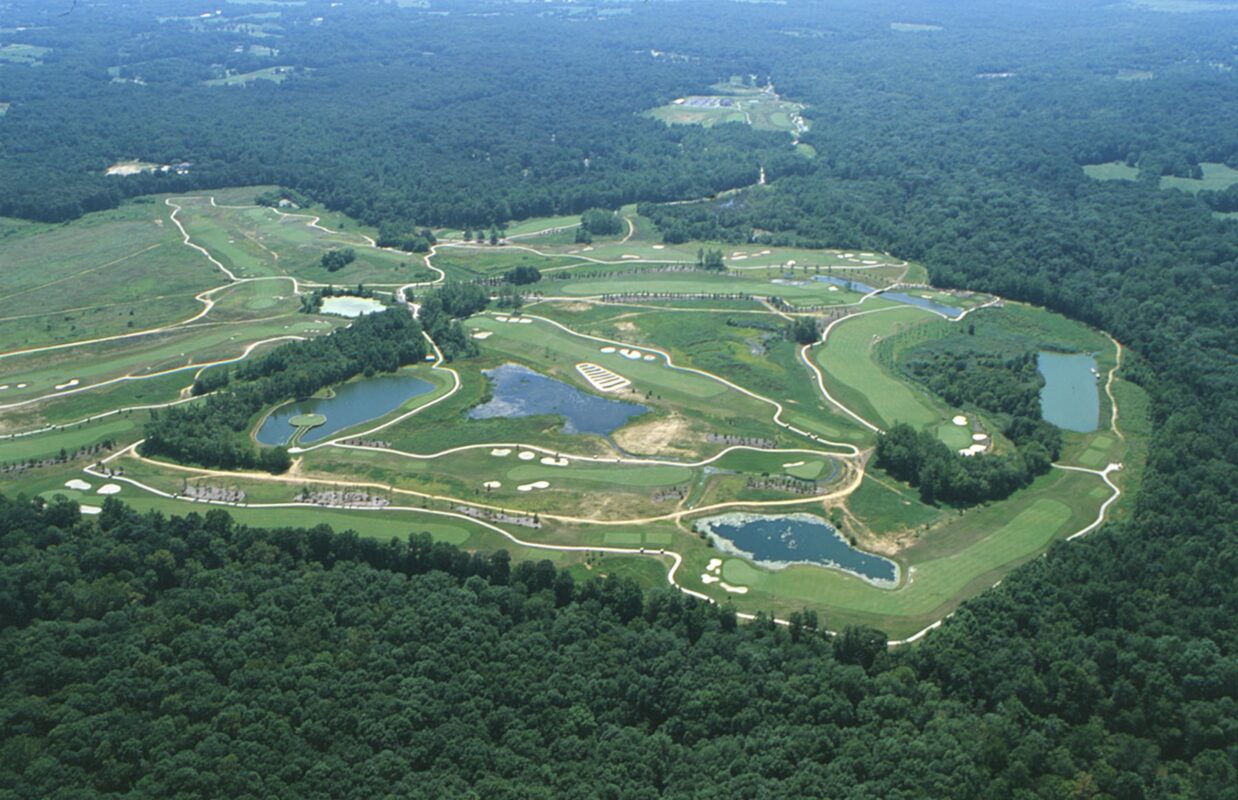This spring, Aggregates Manager put out the call for entries into our second annual photo contest.
The top winner, Lemon Grove, Calif.-based RCP Block & Brick is a family-owned company that extracts sand to provide material for the manufacture of its core products – concrete masonry units and retaining wall block. Its reclamation plan was approved in 1991 and began in 1994. By working with the local community, the operator was able to restore the native vegetation and streamed along the new Walker Preserve Trail, which is a segment of the larger San Diego River Trail.
Along the reclaimed slopes of the site, the city of Santee installed a public trail with placards that explain how the river once provided the sand necessary for the concrete blocks many area residents have in their homes and schools. The placards also highlight how the site has been reclaimed using native vegetation. Interestingly, this community education is all taking place on the community’s dime, not the operator’s. Considering that this project took place in California, it underscores that a good partnership can build ties in even the most unlikely of places.
That’s the message I hope operators throughout the United States and Canada take away from this contest. Build trust with your local communities. Take their needs into account when considering future use of your property. Foster an environment where each entity helps the other. That is a future plan worth creating.
For more great ideas, check out our photo gallery below.

Aggregate Industries (AI) completed restoration on more than 110 acres at its Chelsea Mine in Waterloo Township, Mich. The project included 89 acres that were deeded to the Michigan Department of Natural Resources (DNR) last year. It is now part of the Waterloo Recreational Area and includes a gravel parking area for visitors. AI is working with the DNR to return many areas of the one to native vegetation through seed harvesting and strategic replanting. In addition, native grasses and bushes have been selected to promote native wildlife. There are an additional 200 acres of the Chelsea Sand & Gravel Mine that are still actively being mined.

Alberta Transportation’s Blueridge gravel pit was redeveloped into a recreational area that includes a trout pond, hiking trails, picnic area, beach, and a motocross track. The boundary of the lake is also protected as wetland habitat. The motocross track is managed by Whitecourt Motocross association, and the recreational area is managed by the Municipal District of Woodlands. The gravel pit was in use for about 20 years. The remaining gravel pit on the north side of the operation will be redeveloped as a campground, once depleted.

Cemex’s Engstrom Lake Project at its 474 Sand Mine in Clermont, Fla., kicked off its reclamation project in a big way. More than 500 elementary students spent a week there and planted 2,500 trees to help restore and enhance a mined and reclaimed upland. Once plantings were complete, the operation added an outdoor learning center and project learning area that includes 20 acres divided into four habitat areas. The operation hosts field trips throughout the school year, with more than 3,000 students visiting the site each year.

Chaney Enterprises reclaimed its Mardi Mine facility in Davidsonville, Md., as an 18-hole public golf course. It was selected as the recipient of the 204 Maryland Department of the Environment Reclamation Award, as well as the 2004 Interstate Mining Compact Commission national reclamation award for the non-coal category. It was honored for compliance to state and national regulations and processes, contemporaneous reclamation execution, drainage control, bond release for reclamation success and innovation on the site.

Graniterock’s Santa Cruz Sand Plant began operation in 1967. Located within the Coastal Zone, it maintains a symbiotic relationship with a threatened species and protects the environment through holistic management practices. In 1996, two years before the property was approved for a second mining permit, the California red-legged frog was listed as a threatened species and protected under the Endangered Species Act of 1973. Graniterock worked with local biologists and the Fish and Wildlife Service to develop the first Habitat Conservation Plant for red-legged frogs in Santa Cruz County. Over the years, the site has been used to train local, state, and federal biologists on handling and maintaining red-legged frogs. The plant has been recognized by the Elkhorn Slough, Department of Fish and Wilife, and other agencies for having the most sustainable population of red-legged frogs on the Central Coast. In addition, the site uses holistic management techniques for its reclamation areas. At the end of the 1990s, a previously mined area, called Sandy Flats, was reclaimed by seeding the area with an erosion control seed mix. The seed mix, while a best management practice at the time, primarily contained non-native invasive grades. In an effort to enhance the grassland and encourage the growth of native plants, the Santa Cruz Sand Plant initiated grazing on the property. In spring 2013, 90 goats were rotated through portions of the 6-acre area until it had been grazed. While the goats fed in each area, native plant seed was spread for the goats to press in with their hooves and fertilize with their droppings. The cell was seeded twice more after grazing. A year later, the grassland responded with more native grasses and shrubs.

Lehigh Southwest Cement Co., part of the Heidelberg Cement Group, operated its Burney Diatomaceous Earth Mine for approximately 20 years. The site is located in a remote area of Shasta County, Calif., at an elevation of nearly 3,000 feet. Materials were excavated and hauled more than 60 miles to the company’s Redding Plant for cement manufacture. The reclamation plan called for backfilling waste materials against slopes and re-soiling and revegetating the site to establish native habitat, including wetland habitat not previously existing on the site. When mining was suspended in 1999, more than 10 years of reclamation and monitoring were completed to ensure reclamation success. Final conditions included nearly twice the number of target plant species and nearly five times the target acreage of wetland habitat.

Lehigh Hanson’s Fairmount Quarry in Westchester, Ill., turned to University of Illinois Professor DoKyoung Lee and an innovative local farmer, John Miller, as it sought to not only meet reclamation requirements, but also create local and regional benefits. Using non-traditional farming equipment to plant native seeds selected for their vigor and ability to grown in low-nutrient soils, they were able to quickly establish the necessary ground cover. Within one year, some areas were released from bond — much faster than under normal circumstances. The operation won the Illinois Department of Natural Resources’ 2014 Illinois Mined Land Reclamation Award, the Non-coal Reclamation Award from the National Association of State Land Reclamationists, and an Honorable Mention for the Kenes C. Bowling National Mine Reclamation Award from the Interstate Mining Compact Commission.

In 2009, O&G Industries completed a three-year transformation of a former sand and gravel site into a 45-acre recreational area that is visited by thousands of people each year. Recreational options include fishing, boating, hiking, and enjoying the park’s hiking trails, natural resources, and wildlife. The site, known as Toby’s Pond and Recreational Park, features a 40-acre man-made pond and several thousand feet of frontage along thee Naugatuck River, located near the town center of Beacon Falls, Conn. O&G donated all of the labor, materials, and equipment necessary to transform the site. When completed, it cost just under $800,000 and took just over 10,000 man-hours to complete. Upon completion, the land was donated to the town of Beacon Falls as part of its open space initiative.

Neville Bros. Sand and Gravel worked with Ontario Aggregate Consultants and LRL Associates to design a concurrent reclamation plan for its Naomi Pit in Finch, Ontario, Canada. The operation extracts sand both above and below water. The quality sand needs no processing; it is simply bailed out of the water with a shovel, allowed to drain for a couple of days, and then loaded into trucks to various job sites. Neville Bros. completed mining and reclamation on the south side of the site and is now working to grade slopes and restore the west side.

RCP Block & Brick tied reclamation activities at one of its Santee Sand Pits to a greater community development project along the San Diego River. Its plan was designed to restore the native vegetation and streambed along the new Walker Preserve Trail, which is a segment of the larger San Diego River Trail. It started its efforts by constructing a streambed stabilizer to protect the San Diego River property from erosion and scouring. As mining was completed in areas along the river, slopes were graded and native vegetation was planted. The city of Santee installed a public trail along these slopes. The trail includes placards explaining how the river once provided the sand needed for concrete blocks used in local homes, schools, and other projects. Both city and county officials were on hand to celebrate the dedication of the trail.

Rogers Group Inc.’s former Louisville Crushed Stone operation, in Louisville, Ky., was mined until the 1970s, when its reserves were depleted and operations were moved to nearby sites. The surface property is home to a K-Mart, the Louisville Zoo, and several industrial-use properties, but the underground project is truly the star. One portion of the cavern, Louisville Underground, is leased as manufacturing and commercial warehousing. There, Warner Brothers Studios stores old film archives. It also serves as the state’s largest RV and boat storage facility. Another portion, Louisville Mega Cavern, is an entertainment center that features the nation’s largest underground zipline facility, a ropes course, bike trails, a Christmas lights show, and event and meeting space for up to 100.

Vulcan Material Co.’s Polk Sand Plant is a 691-acre sand mine that has been in operation since 1989. Vulcan acquired it in 1991 and operated the mine until Dec. 31, 2014, when mining was completed. Reclamation has been ongoing at the property, concurrent with mining. It worked closely with the landowner to ensure the post-mininguse would be beneficial for recreation, wildlife, and agriculture. Prior to cessation of mining, Vulcan had created more than 4 acres of freshwater marsh, 5 acres of forested upland, 10 acres of wetland, 103 acres of lakes, and196 acres of grassy uplands. Freshwater marshes and wetlands have been planted with the native wetlands species to promote use by wildlife. The final phase of reclamation is currently ongoing and is anticipated to be complete this summer. It will add an additional 3 acres of freshwater marsh, 14 acres of grassy upland, and 73 acres of lakes.

Vulcan Materials Co.’s River Rock site includes Rank Island, which contains one of the last remaining old growth stands of native mixed riparian forest along a section of the San Joaquin River. The original 1960s sand and gravel mining permit allowed mining of the entire island, including the removal of all the woodland and riparian habitat. In 1990, the company recognized the wildlife habitat importance of the island and voluntarily revised the mining and reclamation plan to preserve all the mixed riparian woodland and oak woodland, mining only about 90 acres that had already been disturbed by mining. The reclamation plan was designed to reclaim the mined phases to ponds and upland areas with wetlands and riparian and upland habitat to mimic naturally occurring habitat in the surrounding area and to recreate some of the habitat that historically occurred along the river. A native plant nursery was developed on the site for the ore than 20 species of native plants that are planted for reclamation. In 1994, the California Wildlife Conservation Board purchases 270 acres of Rank Island and made it part of the San Joaquin River Ecological Reserve. In 2011, Vulcan’s reclamation on Rank Island received statewide recognition as it received the Department of Conservation, Office of Mine Reclamation’s Excellence in Reclamation award.
Therese Dunphy | Published on June 30, 2015
– See more at: http://www.aggman.com/photos-reclamation-photo-contest-entries-showcase-post-mining-opportunities/#sthash.76Q6qRBB.dpuf

